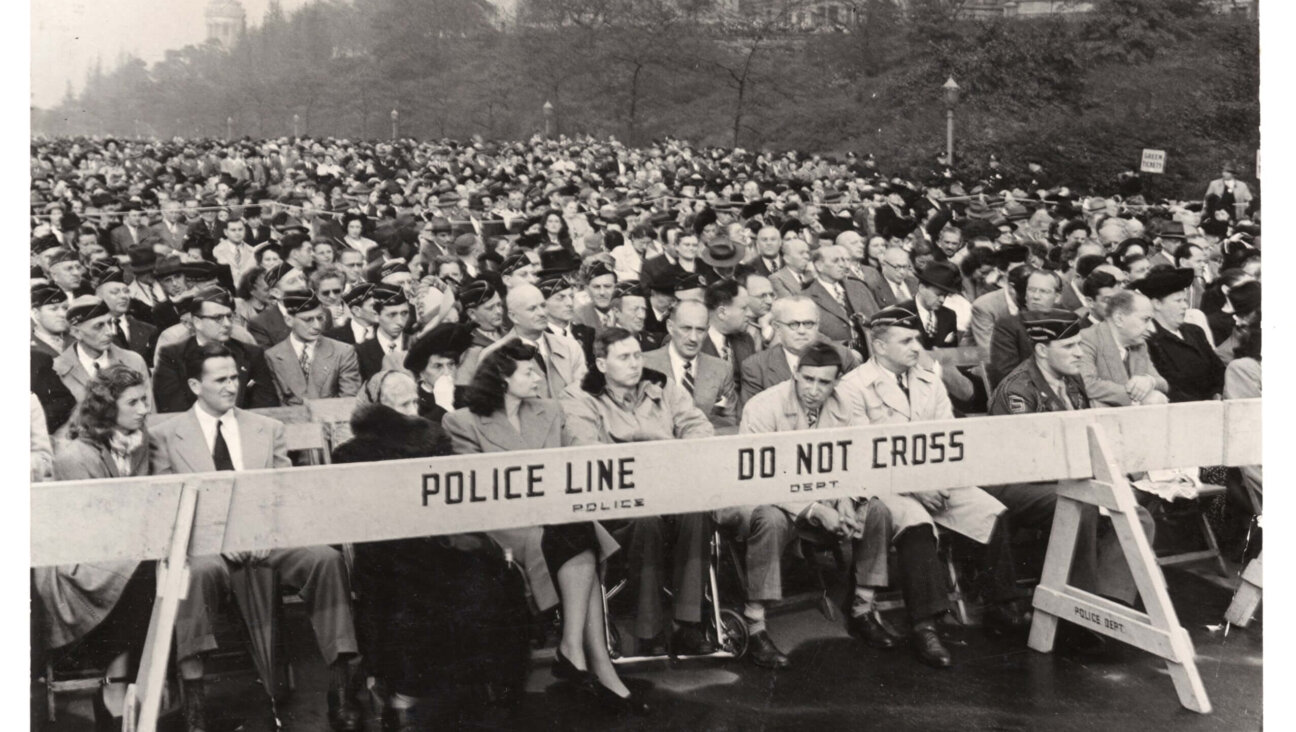Prisoner X and the Letter of Mystery

X Marks the Spot: Why do we use the capital letter ?X? to designate nameless people, especially when there is an aura of mystery around them? Image by haaretz
By now, unless you’re the type that refuses to follow the news (not that I blame you, but in that case, why are you reading this newspaper?), you know who “Prisoner X” is. Called “Mr. X” by the Israeli news service Ynet, which originally broke the story of his suicide in a high-security Israeli prison cell in 2010, “Prisoner X” was recently brought again to the world’s attention by an Australian Broadcasting Corporation report that he was in fact a dual Australian-Israeli citizen named Ben Zygier.
All this has now been corroborated by the Israeli authorities, although just what Zygier did to merit his fate remains, at the moment, an enigma.
But the enigma that interests me is of another sort. Why, I found myself wondering, do we use the capital letter “X” to designate nameless people, especially when there is an aura of mystery around them?
At first glance, this usage goes back to at least 1932, when Warner Bros. released the early Technicolor horror movie “Doctor X,” starring Lee Tracy as Dr. Jerry Xavier, a physician who investigates a series of grisly cannibalistic murders. And yet the Doctor X of this movie does have a name, which is where the X of its title comes from. “X” in the sense of “nameless” first turns up, probably under the influence of the Warner Bros. film, in 1944, in the character of The Amazing Mr. X in the British comic book series “The Dandy.”
Subsequently, this meaning of “X” began to spread. There are by now dozens of Mr. X’s in comics, films and video games, plus Ms. X’s, Dr. X’s, Professor X’s and other members of the X family, and “X” long ago entered everyday speech as a way of referring to an unidentified person or (in an expression like “the X factor”) thing.
But the history of “X” as a synonym for “nameless” is far more complicated. It probably starts with the 17th-century French philosopher and mathematician René Descartes, who in his 1637 book “La Géometrie” first systematically used a lower-case “x,” together with “y” and “z,” to signify an unknown quantity in simple algebraic equations. Descartes did this on the model of the ancient Greek geometrician Euclid, who made the Greek letters alpha, beta, gamma, etc., stand for points on lines.
(Who doesn’t remember instructions from his school days like, “Let AB be a line segment bisected at C by DE”?) Since Euclid had chosen the first letters of the Greek alphabet for geometry, Descartes chose the last ones of the Latin alphabet for algebra, and his choice was quickly adopted by other mathematicians.
We now jump from mathematics to physics and from 1637 to 1895, when the German scientist Wilhelm Röntgen discovered a new type of radiation. Röntgen, who wasn’t sure just what he had come across, named his find in German X-Strahlen, using the algebraic symbol for something unknown. Although X-Strahlen was eventually replaced in German by Röntgenstrahlen, “X-ray” has remained our English word and has also contributed, with the help of the term “X-ray vision,” to x’s ability to evoke the uncanny.
From here we backtrack slightly to 1883, when Robert Louis Stevenson’s classic children’s novel, “Treasure Island,” with its tale of buried pirate loot, popularized the expression “X marks the spot,” an allusion to the letter x’s use to indicate precise locations on detailed maps. This x has nothing to do with algebra. It is used in this way because its two intersecting lines create an easily visible point where they meet — and yet by a curious coincidence, this, too, associates x with secrecy and mystery.
Finally, we have the equally unrelated idiom “to x out,” dating from the pre-Typex days of typewriters, when printing a row of x’s over a typed line was the standard way of erasing. (X’s may have been picked for the job because they’re good at covering the shapes of other letters.)
This typewriter x was probably the inspiration for the x on your computer screen that shuts down boxes, pop-ups and programs, which is what the phrase “x-ing out” calls to mind today, as well as the source of the scrawled X with which we blot out illustrations we don’t wish to be seen, and the term “X-rated.” And so, once again, we find “x” connected with what is hidden.
Indeed, so established was the letter x as a symbol of the unknown long before the 1930s, one suspects that rather than being called “Doctor X” because his name was Xavier, Lee Tracy’s physician-sleuth was given the name Xavier because the film’s scriptwriters wished to call him “Doctor X.” Perhaps, now that we know his real name, Prisoner X should be called “Prisoner ZY.” Or as Descartes might have put it, letting “m” stand for Mossad, m(zy)=x2.
Questions for Philologos can be sent to [email protected]

I hope you appreciated this article. Before you go, I’d like to ask you to please support the Forward’s award-winning journalism this Passover.
In this age of misinformation, our work is needed like never before. We report on the news that matters most to American Jews, driven by truth, not ideology.
At a time when newsrooms are closing or cutting back, the Forward has removed its paywall. That means for the first time in our 126-year history, Forward journalism is free to everyone, everywhere. With an ongoing war, rising antisemitism, and a flood of disinformation that may affect the upcoming election, we believe that free and open access to Jewish journalism is imperative.
Readers like you make it all possible. Right now, we’re in the middle of our Passover Pledge Drive and we need 500 people to step up and make a gift to sustain our trustworthy, independent journalism.
Make a gift of any size and become a Forward member today. You’ll support our mission to tell the American Jewish story fully and fairly.
— Rachel Fishman Feddersen, Publisher and CEO
Join our mission to tell the Jewish story fully and fairly.
Our Goal: 500 gifts during our Passover Pledge Drive!
























